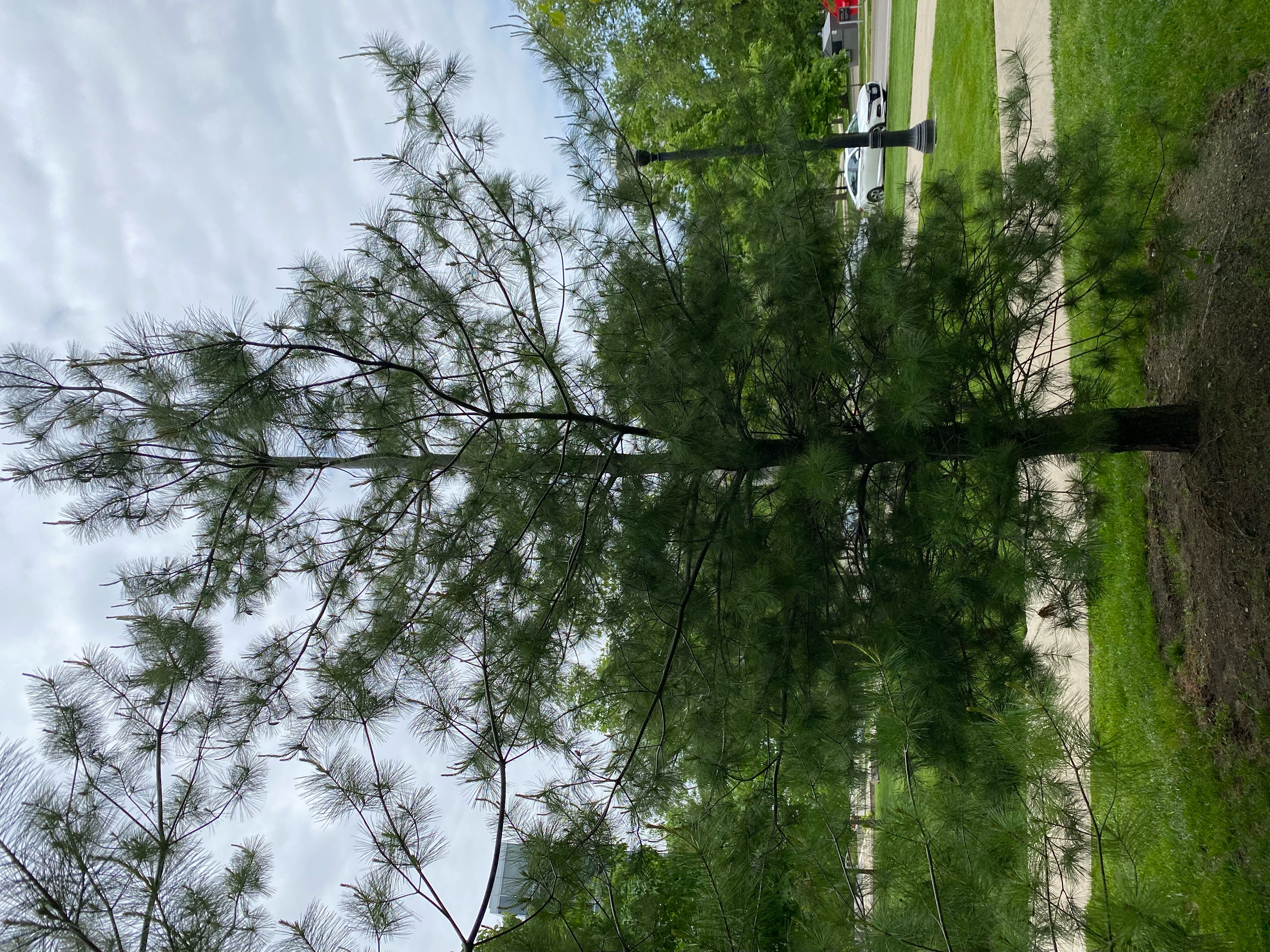Trees have always been something around me. I remember first getting glasses and finally being able to distinguish leaves. I am aware of the different blooms and pops of color they add at the end of a dreary winter, but otherwise, trees have always been trees. It wasn’t until this assignment that I truly paid attention to them. Even today, I spent my run, the same course I have run for the past year, looking around me and noticing all the different trees.
Reading the article on tree blindness it’s amazing to consider all that trees can tell us about our surroundings. Walking around places that have been overpopulated and overdeveloped with little account for what should be growing there and seeing dying trees. You can walk into areas protected from humans with conservation efforts being taken truly blossoming into beautiful lush natural wonders.
I truly felt like my “tree blindness” was so obvious after reading this article and identifying trees for this class. Engaging with what I see around me has made me more curious and also added some vibrancy to those previous lumps of green leaves.
Red Oak
(Quercus rubra)
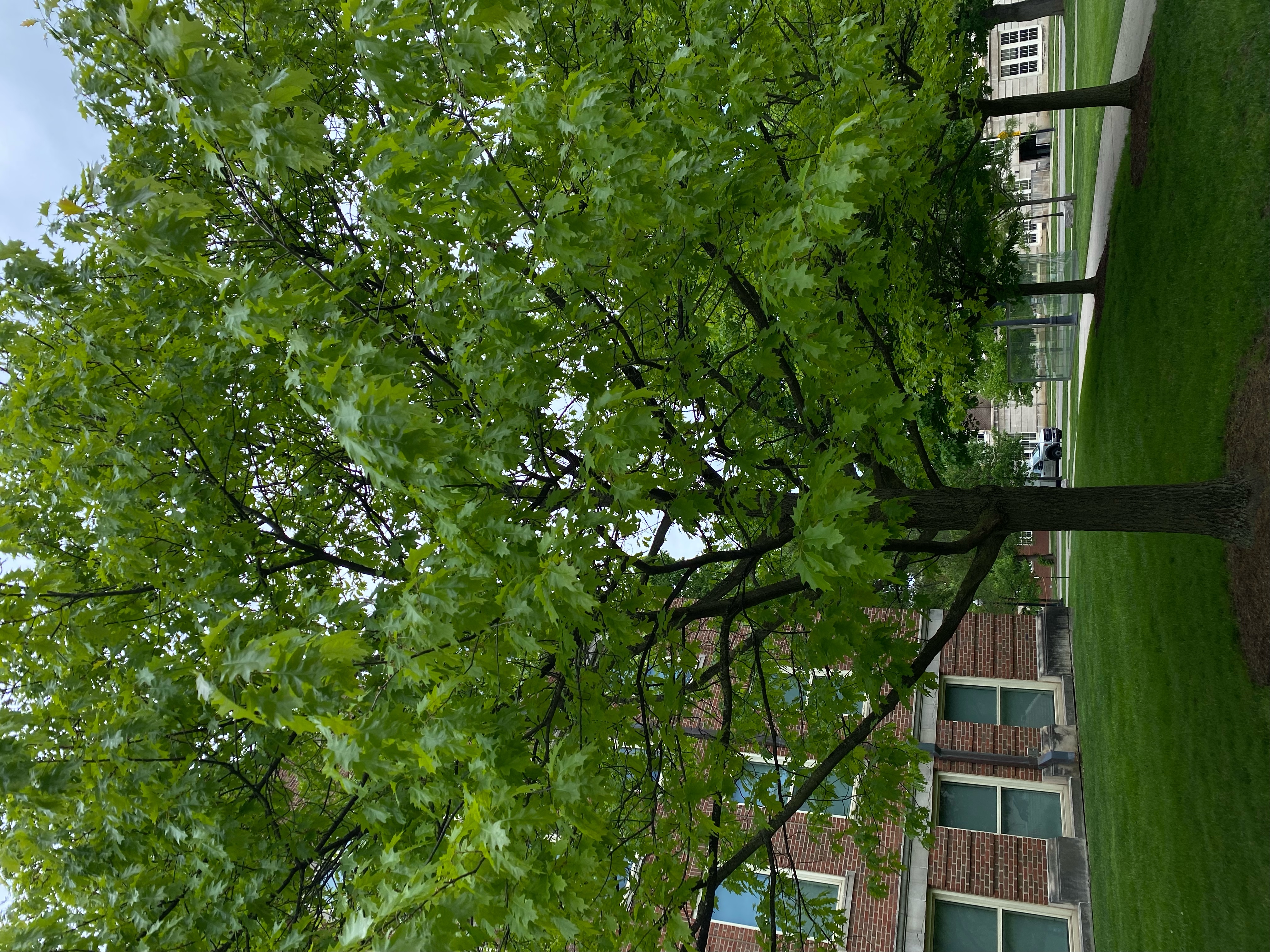
The first tree that caught my eye was this beautiful Red Oak. I found this tree outside of Jennings Hall tucked in a small corner. It had lots of direct sunlight and room to grow. The soil was moist.
Its defining features were its simple, alternatively arranged leaves. The leaves were lobed with a large midvein and the other veins were at right angles to the midvein. From here I found myself settling on the oak family. This oak’s leaves had bristled tips, were dull from above, and were hairless. From here I settled on the Red Oak.
One of the interesting things I learned about the Red Oak was in regard to pests that hurt the tree. Its main pest is a few species of moths that feed on the tree. When they feed on the tree it affects seed dispersal, creating issues with tree repopulation. I found that information here: https://kids.kiddle.co/Northern_red_oak.
White Pine
(Pinus strobus)
I found this tree in an open space on the Ohio State campus. It was in direct sunlight.
This tree is fun to look into! it was obviously very different from most of the trees we have identified in class. It had needle-like leaves arranged in bundles of five down its branches. The needles were long and flimsy. The bark of this pine had deep dark rings on every foot climbing its base.
From our tree guide, I learned that this is the only 5-needle pine! From each of its bundles, It has exactly five needles protruding. Most other pines have needles occurring 3 or 2 to the bunch!
Yellowwood
(Cladrastis lutea)
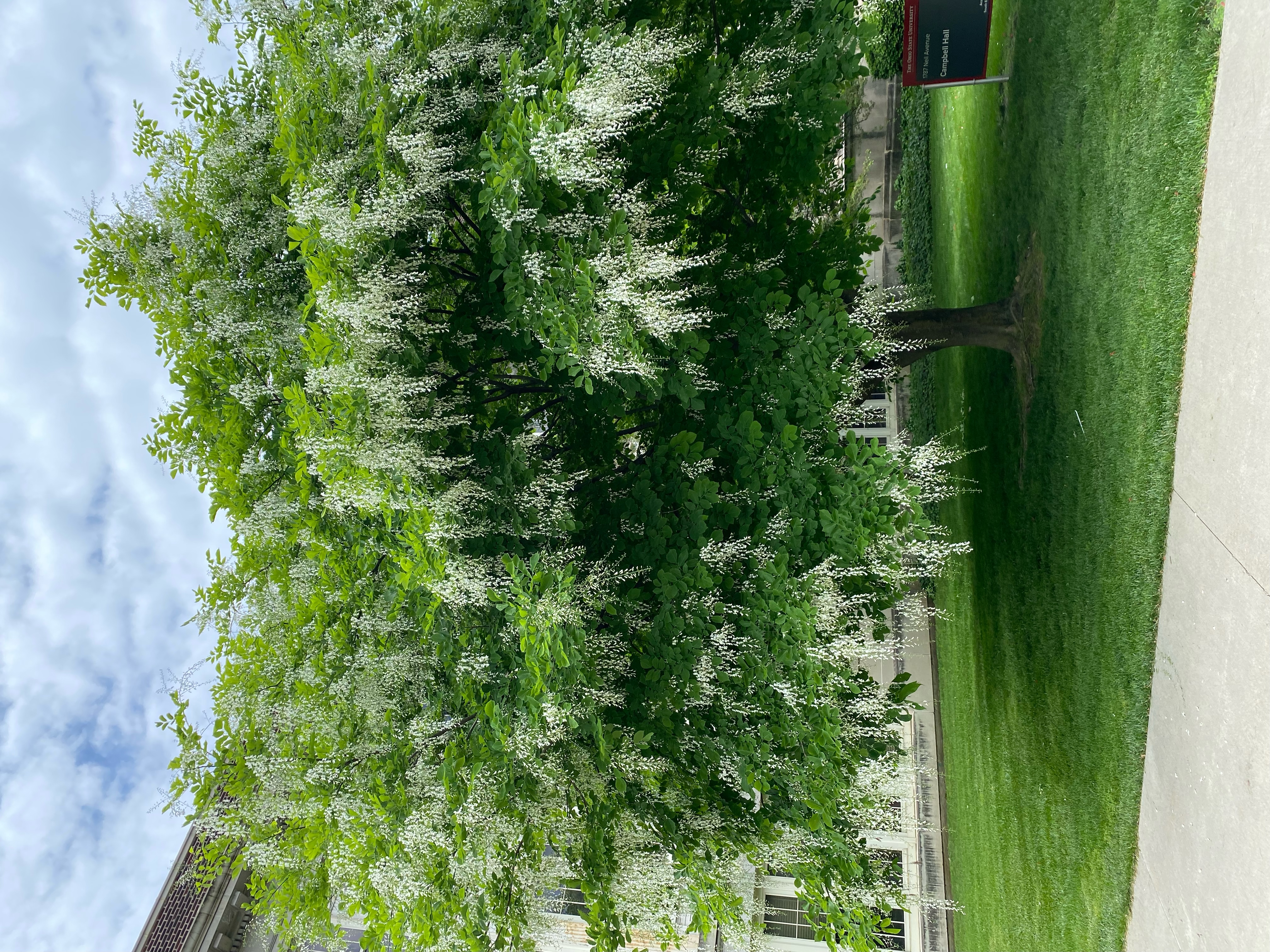
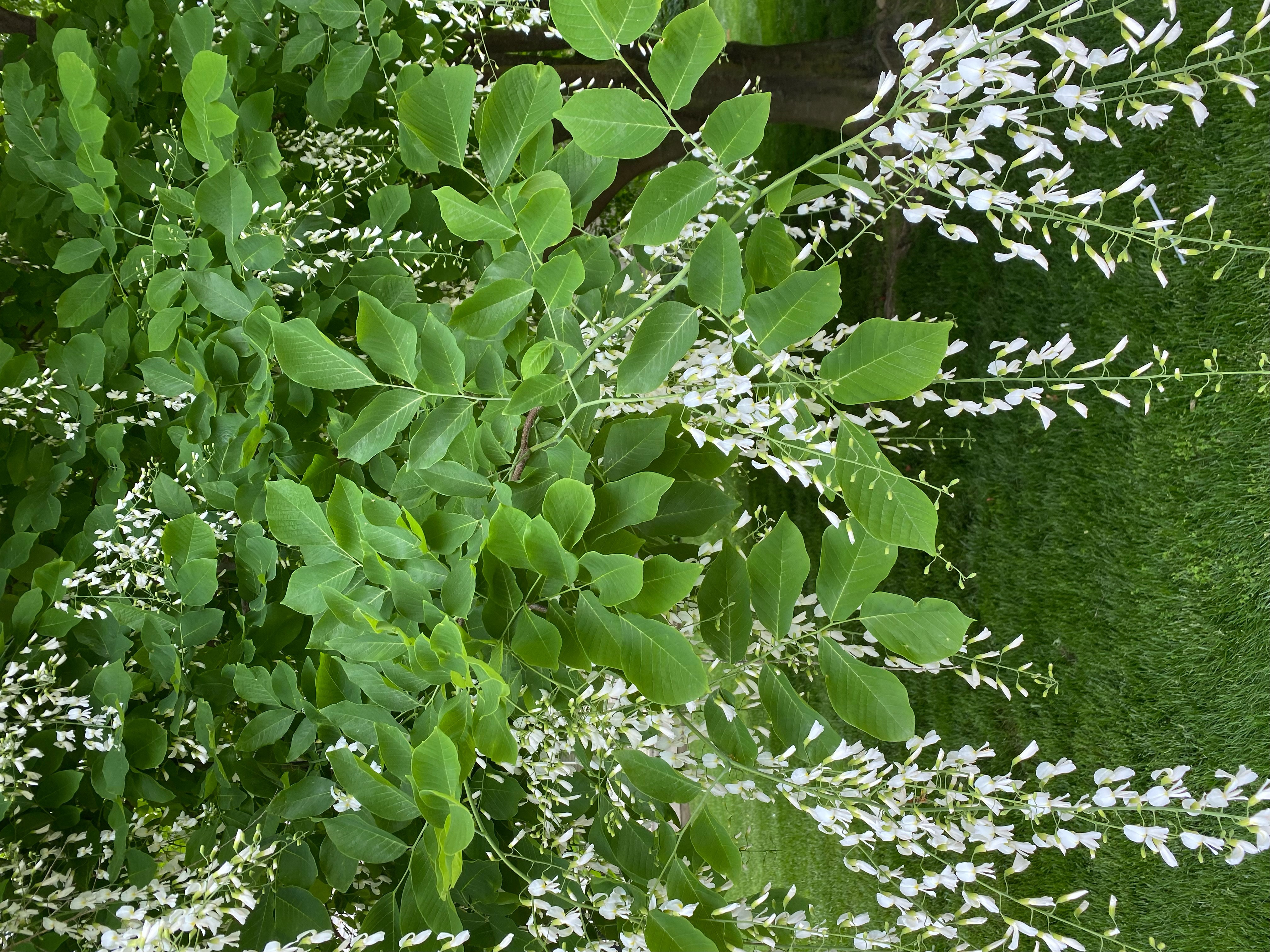
This was my favorite tree I found by far! this beautiful flowering tree was found right outside Campbell Hall.
This tree had pinnately, alternate compounded leaves. It did not have any thorns or prickles. The leaves were only singularly compounded and entire. It also had these beautiful white flower clusters, leading me to the yellowwood.
From the University of Kentucky’s horticulture department, I learned that this tree’s yellow wood was used as a dye in the past! You can read about it yourself here: https://www.uky.edu/hort/Yellowwood#:~:text=Additional%20information%3A&text=Yellowwood%20gets%20its%20common%20name,used%20to%20make%20gun%20stocks.
Ohio Buckeye
(Aesculus glabra)
I found this tree between mirror lake and the Oval. This tree was in a small grove with other trees. It was very shady.
As Dr. Klip said in class, this is the only palmately compounded tree in Ohio, which helped me limit things down a tad. I said these were broad leaves and oppositely compounded. There were five leaflets on each leave and they were arranged like a fan, leading me to the Buckeye family. The feature separating this from other buckeyes was the ridges on its end buds. It also had some small yellow flowers.
When researching interesting facts about this tree, I found a post from Ohio State about growing this tree. I learned that it is susceptible to a disease that causes the leaves to take on a scorched appearance and then completely fall off the tree in late summer. This disease is called Leaf Blotch. You can read about it here: ohio-state-fans-7-things-know-about-growing-ohio-buckeye-tree.

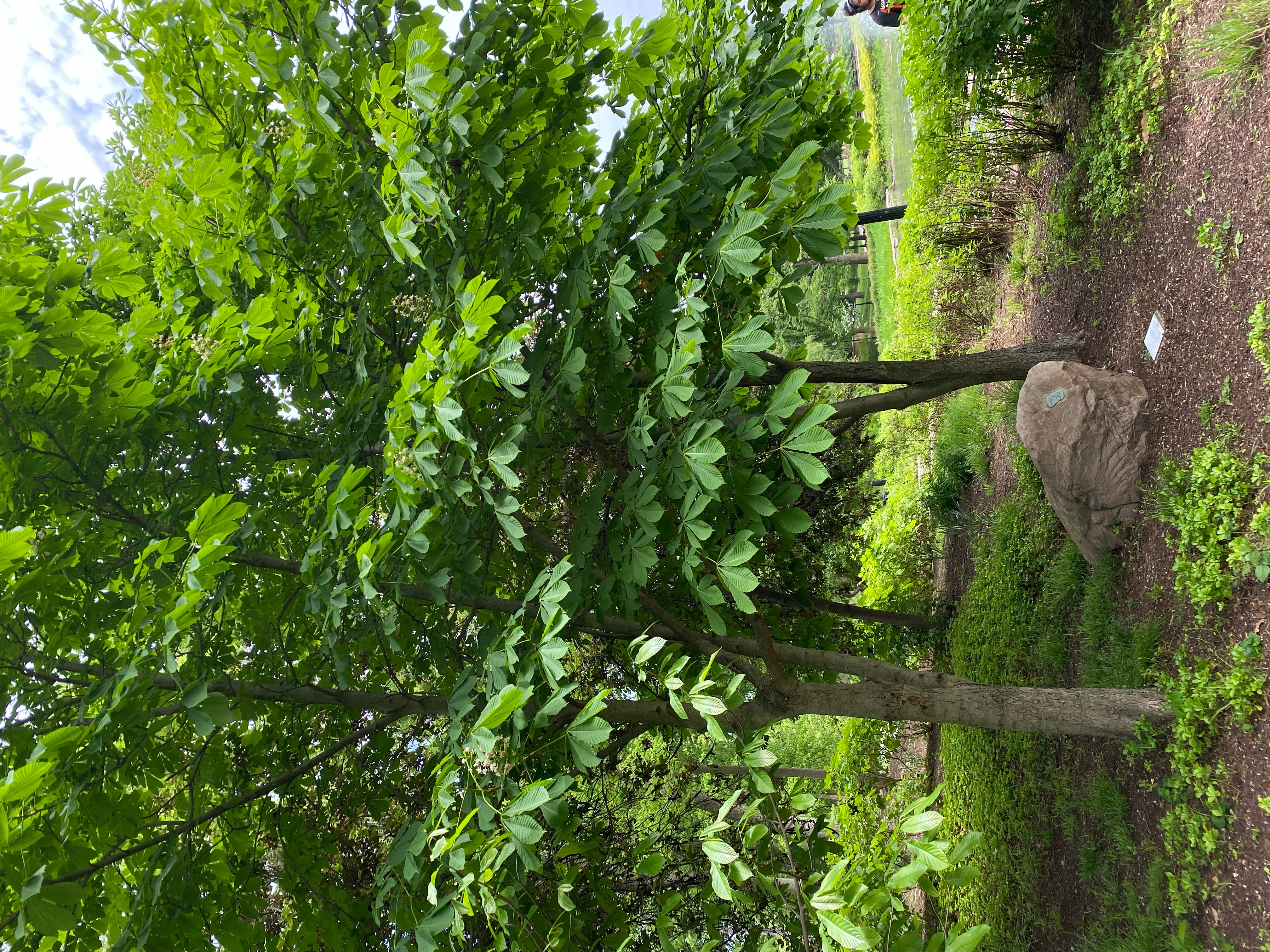
Flowering Dogwood
(Cornus Florida)
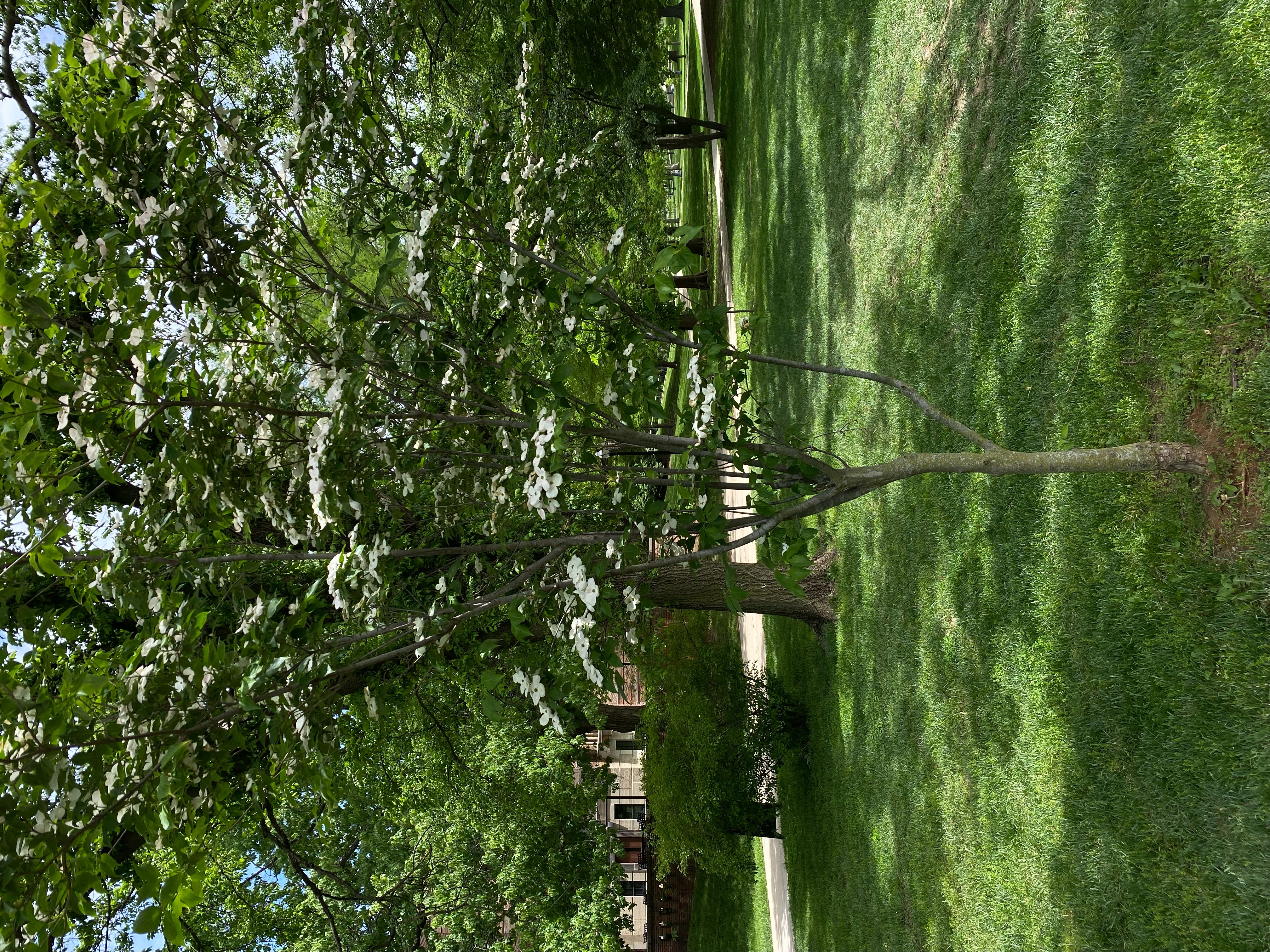
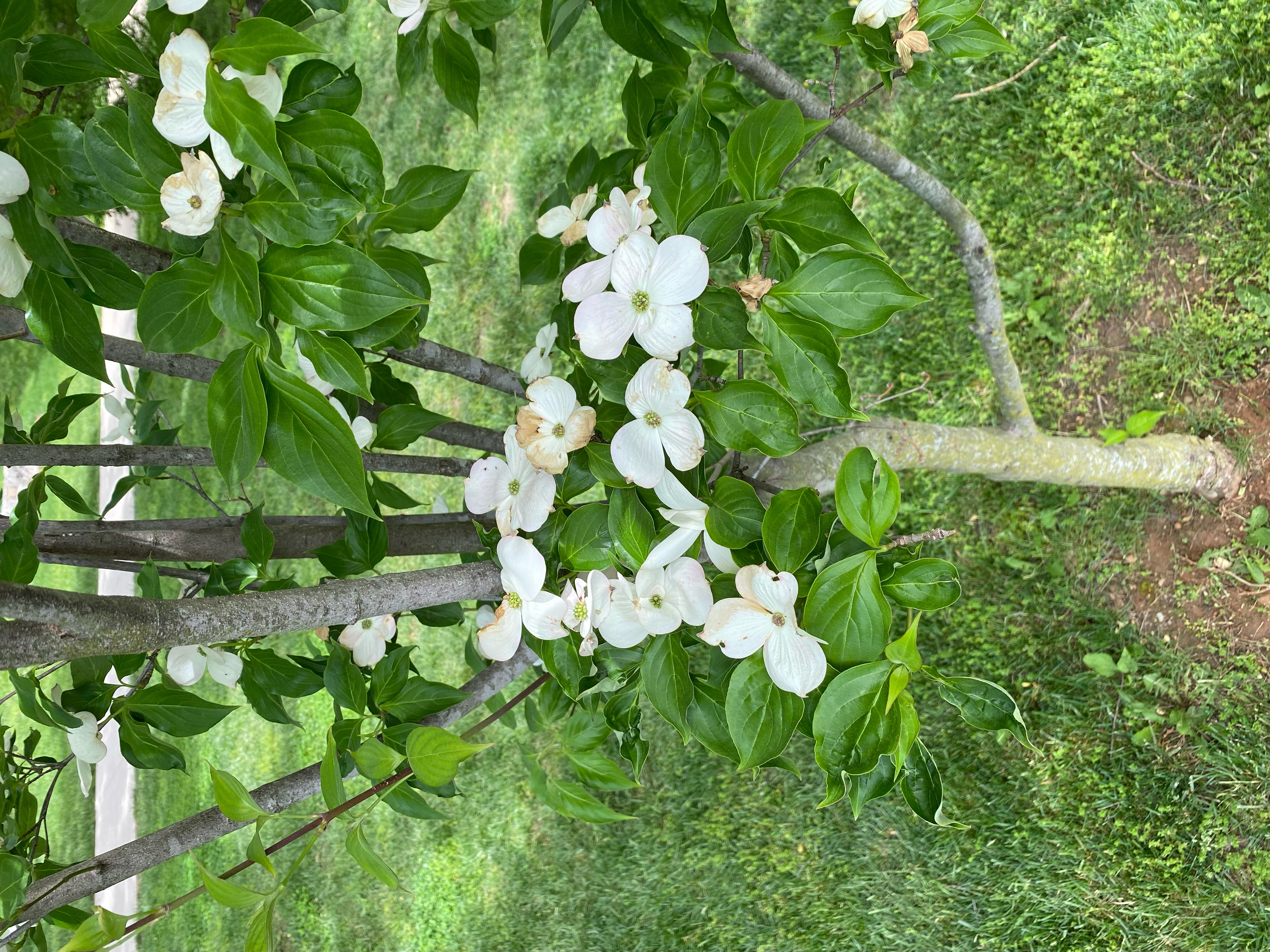
I first noticed this tree due to its beautiful white flowers. This tree was a little smaller and tucked in the shady area between Mirror Lake and the South Oval.
This beautiful tree had opposite, simple leaves. The leaves were entire, with an elongated, elliptical shape. Its veins were strong and ran along the edges of the leaves. It had caplike bud scales. From here, I knew I had a dogwood, but I didn’t know what type. The leaves had 5-6 pairs of veins and had small, white flowers with very distinct tips. This leads me to Flowering Dogwood.
I was really intrigued to learn that 36 species feed on this tree! It’s an important food source for many little critters from animals as large as deer down to tiny birds dogwood-tree-facts. From our manual, I also learned about its many important uses in our day-to-day lives, from dyes to handles.
Balsam Fir
(Abies balsamea)

I found this Balsam Fir between the Oval and Mirror Lake. It was tucked on a hill surrounded by other Fir Trees. The soil here seemed a little dryer and there wasn’t any grass around this tree.
One of the defining features of this tree was its needlelike leaves. The needles were occurring singularly along the branch. They were flattened, but had a rounded but leaving the branch. The branch was also smooth.
Many people either have real or fake Balsam Firs in their homes around Christmas time. Its scent has also been simulated and manufactured for many candles and air fresheners.
American Basswood
(Tilia Americana)
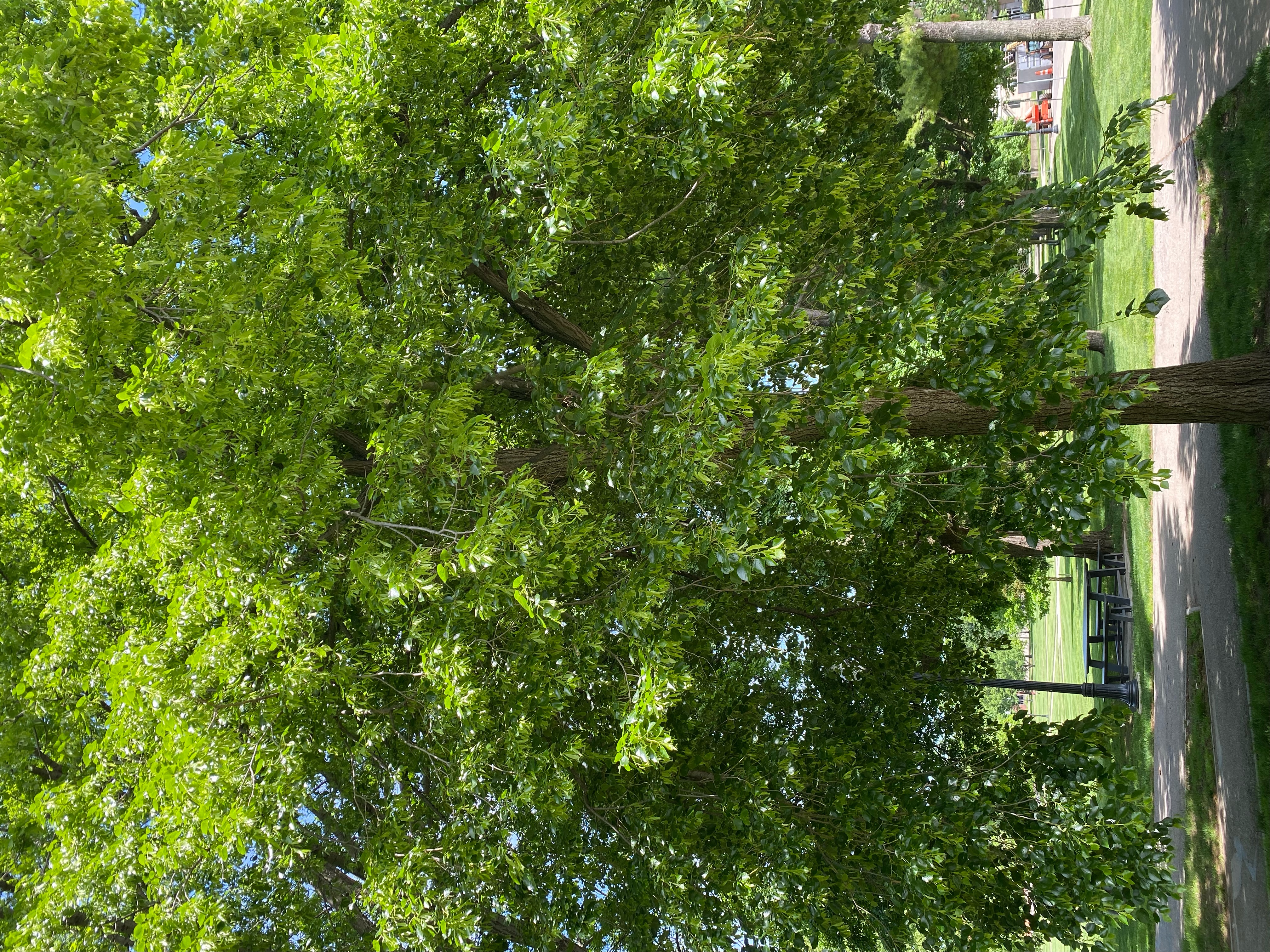
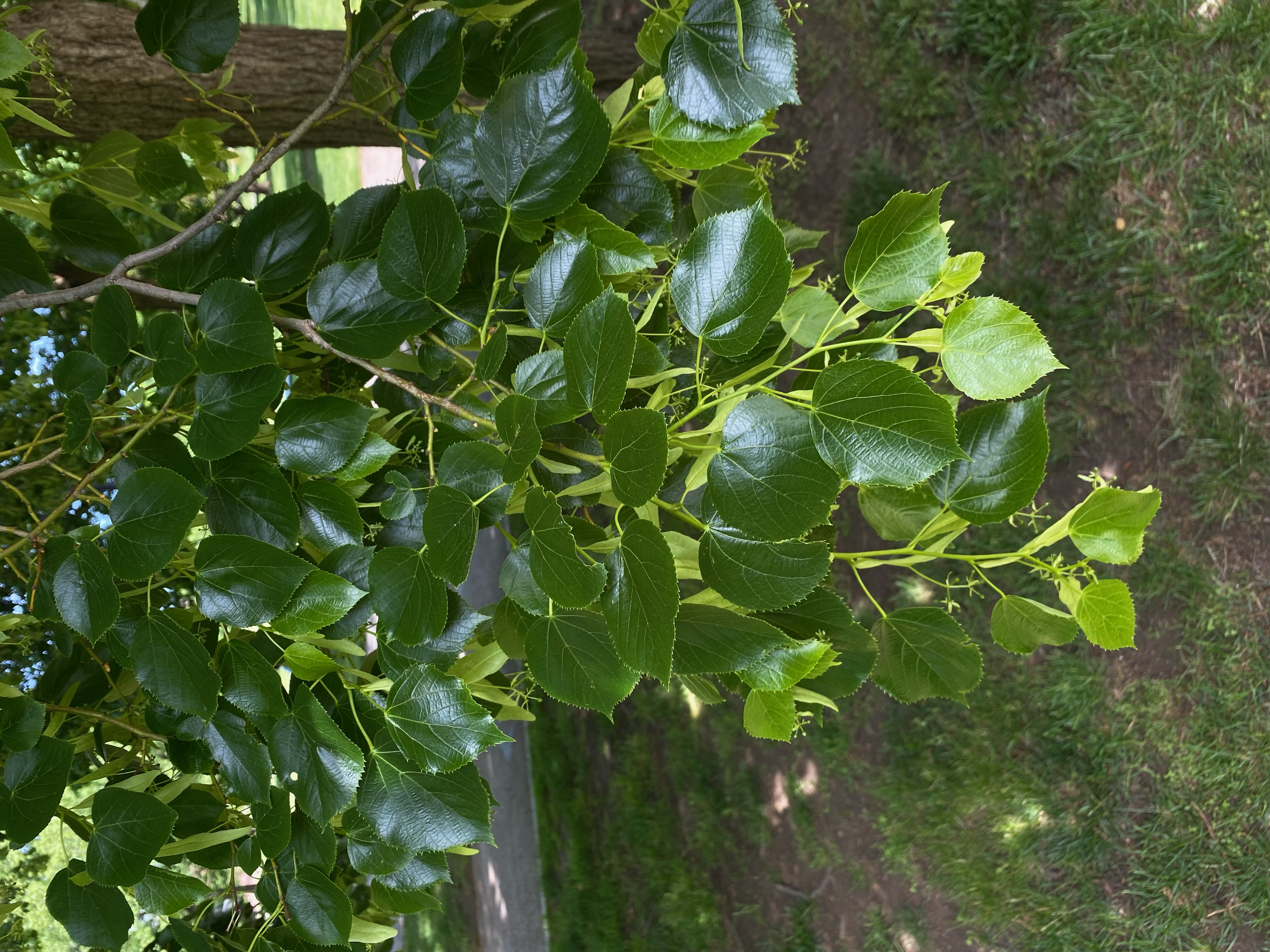
I found this tree on the oval outside of Orton Hall. It’s a tree I’ve walked by nearly every day for multiple semesters but never really noticed. While actually paying attention to it I was aware of its interesting leaf/seed arrangement. This tree is beautiful, and since noticing this one I have been noticing them everywhere.
This American Basswood was very distinct. This erect tree was thornless with lobed leaves and fan-like veins. The leaves were slightly heart-shaped with fine toothing. The fruits were small with wings under each leaf. the flower stalks and leaves were hairless.
Townsen University had a fun post about this tree. I learned that it’s a really versatile tree and able to grow in many soils across the North Eastern portion of the US. I learned that its wood is used by many woodworkers and that these trees often live to be over 100 years old! american-basswood.
American Crabapple
(Pyrus coronaria)
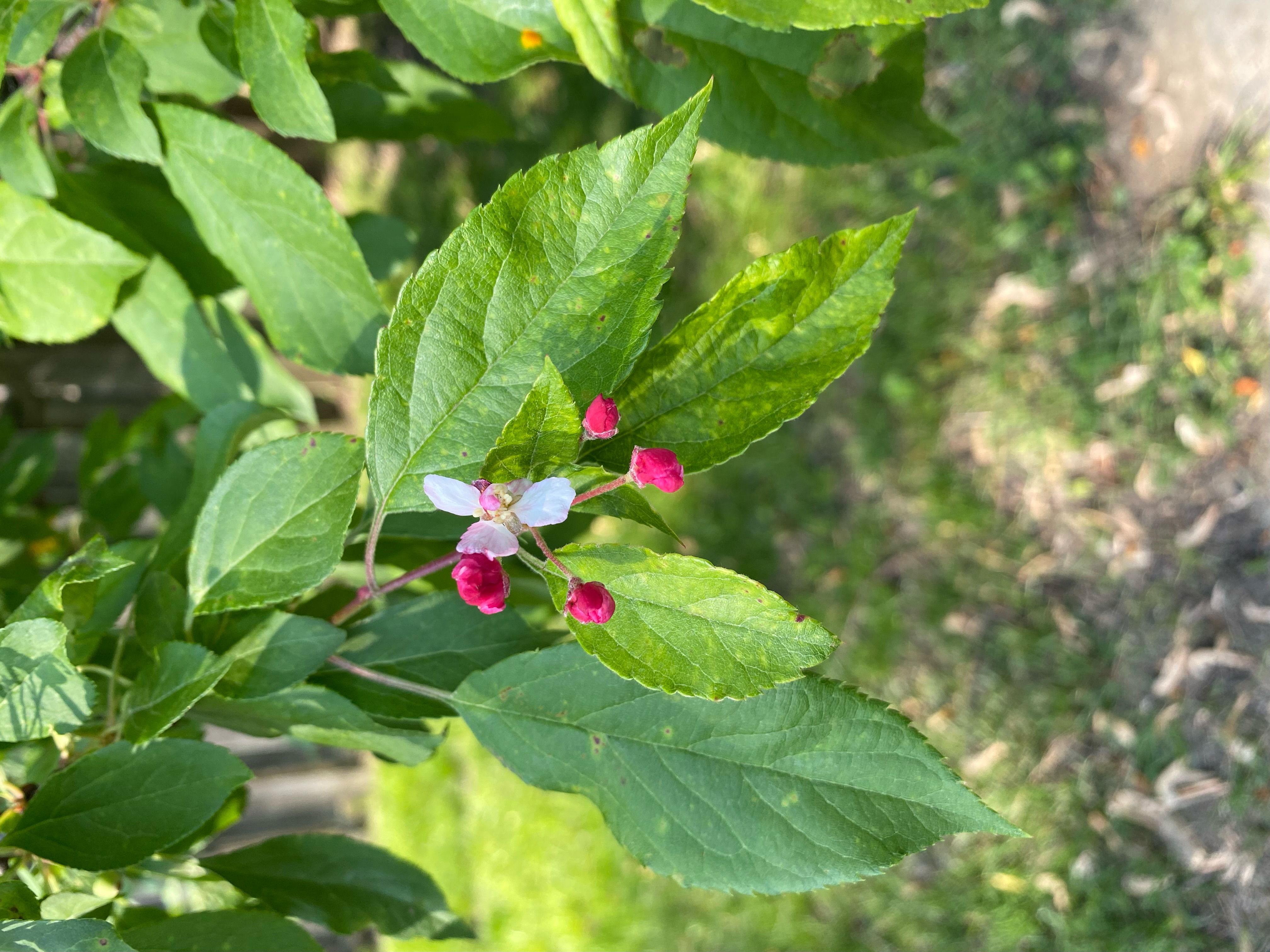
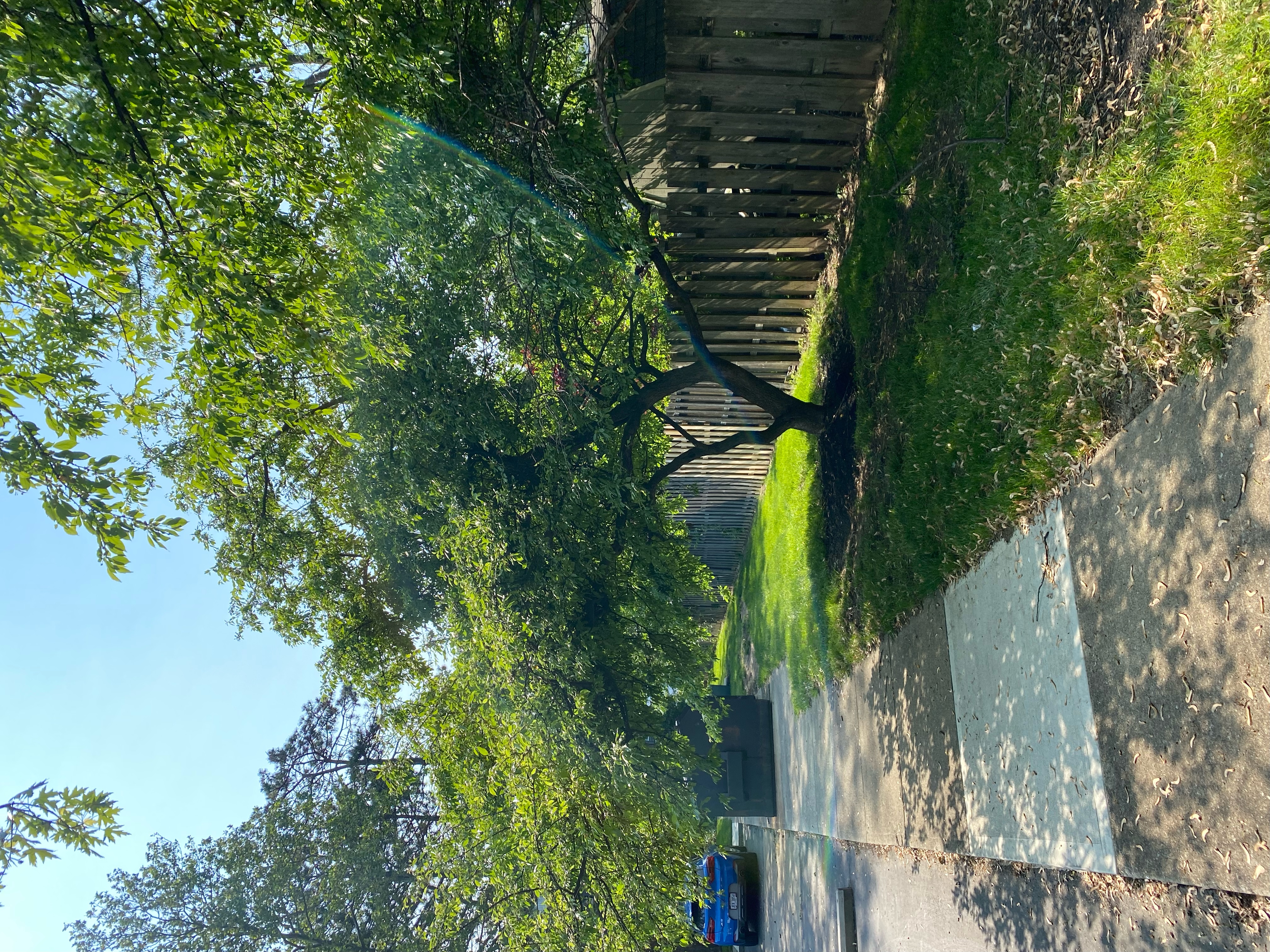
This American Crabapple tree is right outside the door of my home. This spring, I watched it flower with these beautiful pink buds. I ducked under it while stretching before all my runs. It’s been my favorite tree to look at. This week however was the first time I actually paused to identify it.
While kind of hard to distinguish, after close identification, I found this tree to have simple, alternative leave. Its twigs and leaves were hairless with sharp teeth and tips. I knew from this spring that it had these beautiful pink flowers, and I was beginning to see the formation of its fruits. Using my handy field guide, I was able to defer that it was a crabapple tree.
While researching this tree further, I learned that these trees are self-sterile, meaning that they can’t be pollinated by themselves so they must rely on other creatures to move about and pollinate them with other trees. https://naturewalk.yale.edu/trees/rosaceae/malus-x/crabapple-tree-32#:~:text=These%20trees%20typically%20grow%20to,pollinators%20to%20transport%20their%20pollen.

